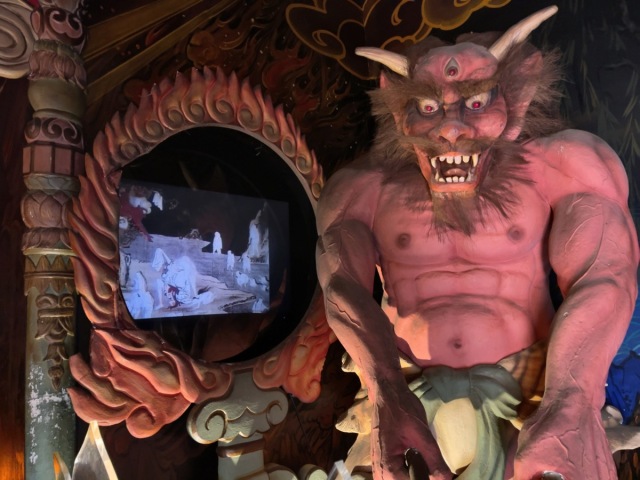
The chief priest at this temple says there’s more to this experience than just entertainment.
Hirano Ward in Osaka City is known for being the most populated ward in the city, with old houses dating back centuries, but did you know it’s also home to heaven and hell?
The two otherworldly realms collide at Senkoji Temple, which is said to be the birthplace of the fields from which the city grew to become what it is today.
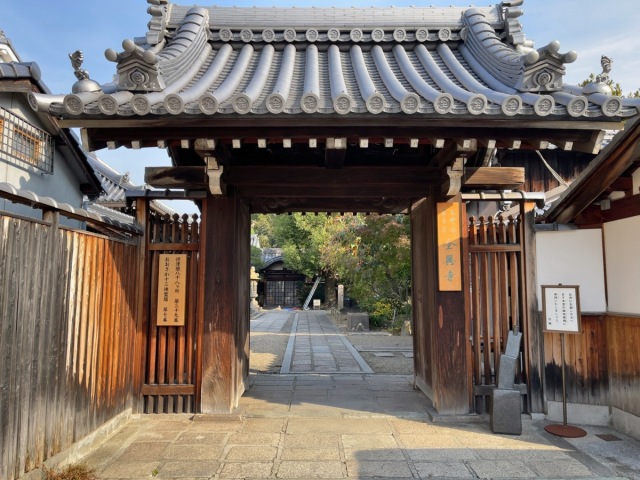
We’d long heard tales of this unusual temple, with many likening it to a theme park rather than a place of holy worship, so we made the trip out to Osaka to speak to the head priest and discover what it’s all about.
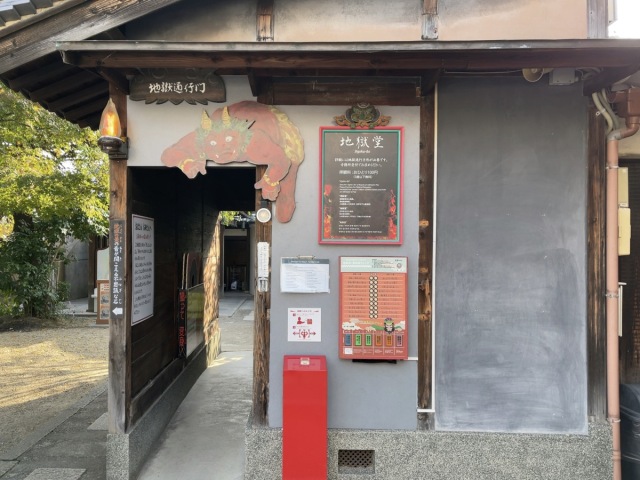
After heading to the main office, we found that the fee to enter “paradise” and “hell” was a mere 100 yen (US$0.88). Once we paid the fee, we were given a ticket with a QR code to scan at the entry point, which can be seen in the photo above.
▼ Visitor tickets have “Pass to Hell” written on them, as it’s recommended you make your way through hell first before reaching paradise.
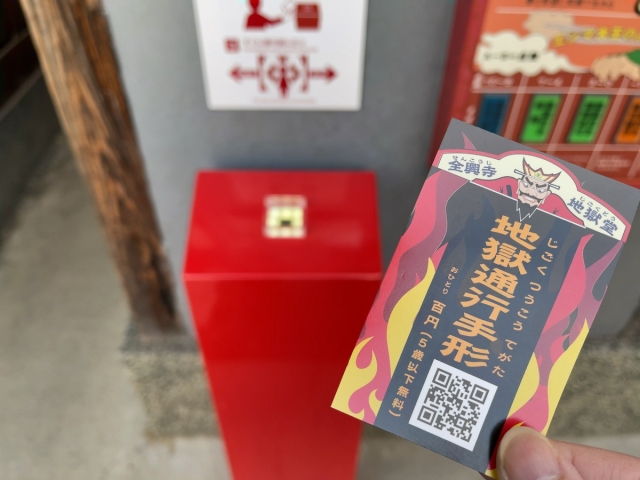
Outside the door to hell, visitors can use this push-button display to answer questions about their daily activities which will reveal whether their life is leading to heaven or hell.

When you’re ready to open the doors to hell, simply scan the QR code over the reader and stand in front of the entranceway.
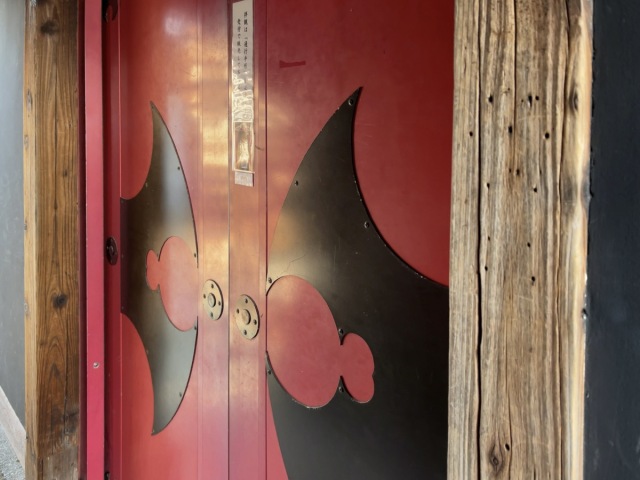
We gulped in trepidation at the infernal terrors that lay ahead, and as the doors opened, we were greeted by this terrifying face.
▼ Yama, the Judge of the Afterlife.
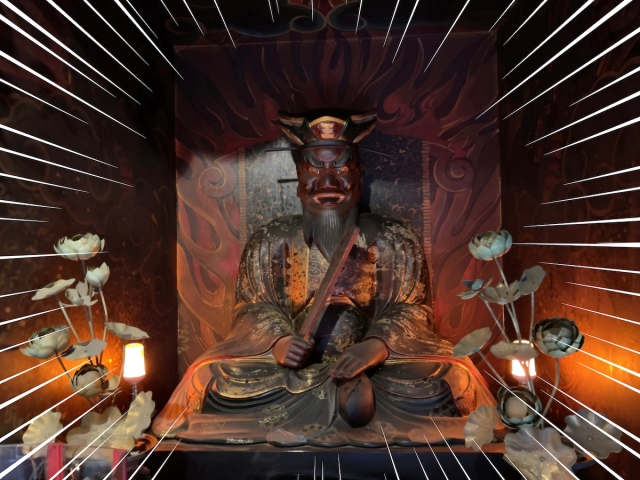
We stepped into the dimly lit interior and found ourselves in a small, claustrophobic space that would only fit two or three people. With Yama’s eyes glaring into our soul, we lowered our eyes to see an offertory box and a gong with a sign next to it that read:
▼ “Hit the gong and hell will appear”

We didn’t really want hell to appear, but now that we were here, we figured the sooner hell was over, the sooner we’d get to paradise. So we hit the gong, and lo and behold, a horned demon appeared, alongside a video that began to tell the story of what makes hell so terrifying, complete with audio of tortured souls.

Beside the giant red demon was a figure of Datsue-ba, an old woman who’s said to sit by the Sanzu River in the Buddhist underworld, torturing souls as they attempt to cross the river. Datsue-ba is believed to make adult souls strip off their clothes, and if they have no clothes, she strips them of their skin instead.
▼ That background makes this scene particularly terrifying.
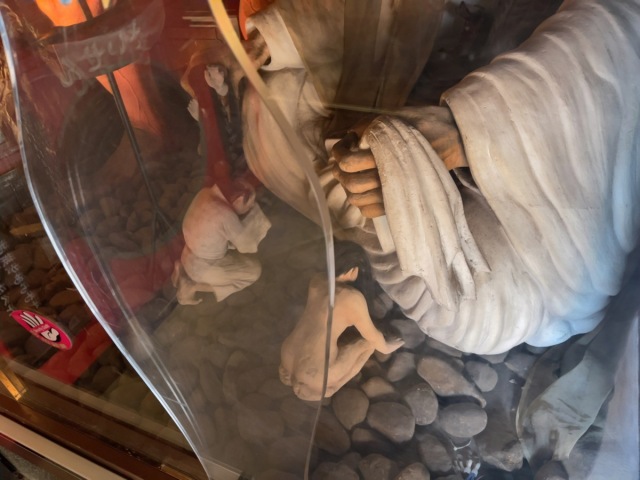
Once you pass by the kings of hell, you’ll be released back out into the human world once again.
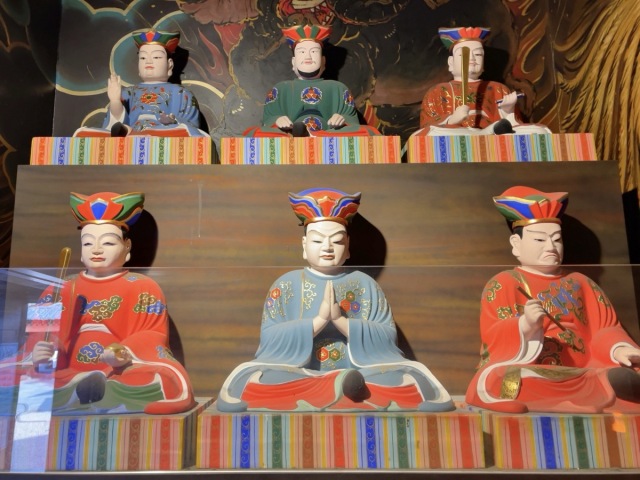
Outside, you can extend the experience by poking your head into this rock, which will let you hear the sound of “Hell’s Cauldron”.
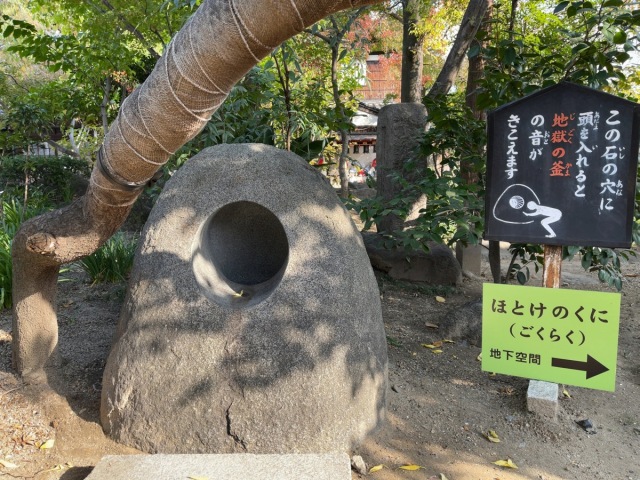
Things begin to look a little brighter from this photo spot, where you can sit on the left and raise your hand, as shown in the shaded image, so it looks like you’re holding the other side of a long red thread, or “love knot” which essentially binds you to Buddharupa, a being who has obtained Buddhahood.
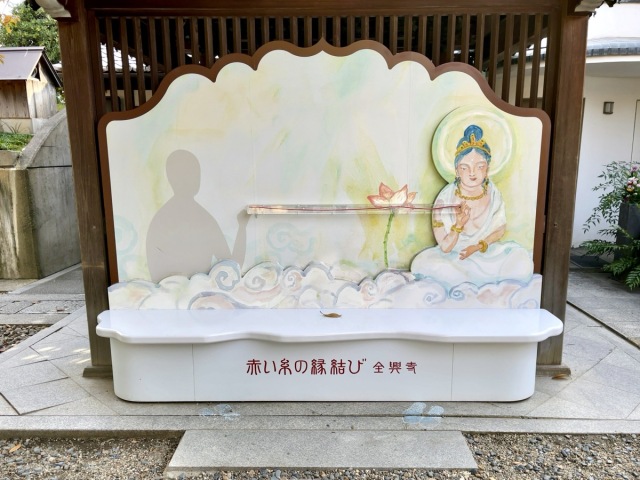
It may seem counterintuitive, but entering paradise, or “The Home of Buddha” as it’s called here, involves going underground.
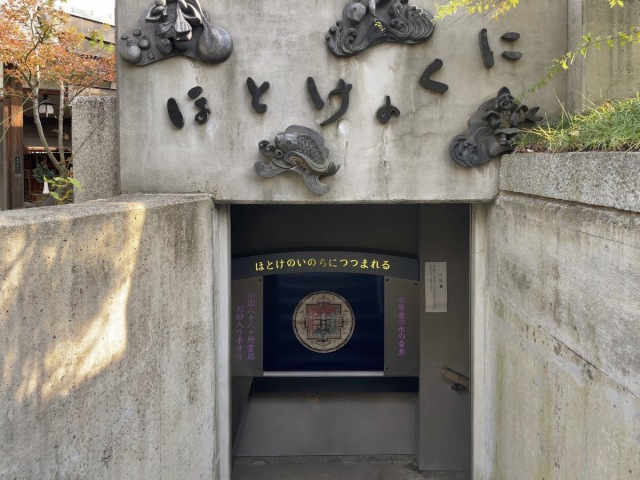
Here, you can meditate in a tranquil space with a stained glass mandala and a reclining buddha made of glass and illuminated by LED lights.
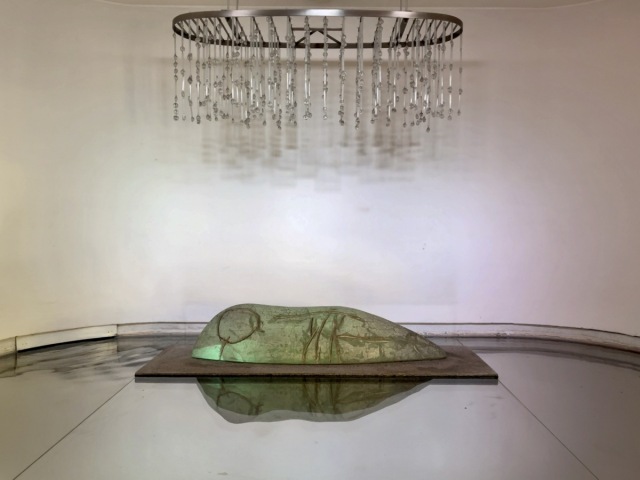
▼ After some quiet meditation, the route takes you past a small Shinto shrine…
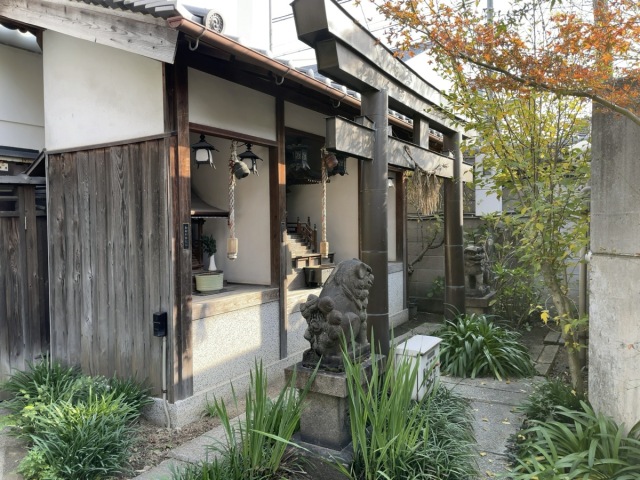
▼ …and a magnificent statue called “Ippon Fudoson“
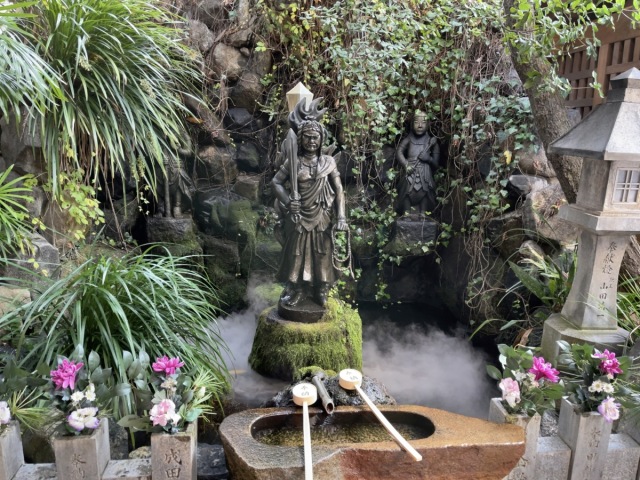
▼ The mist effect at the statue’s feet creates a “sea of clouds” that adds an ethereal element to the scene.
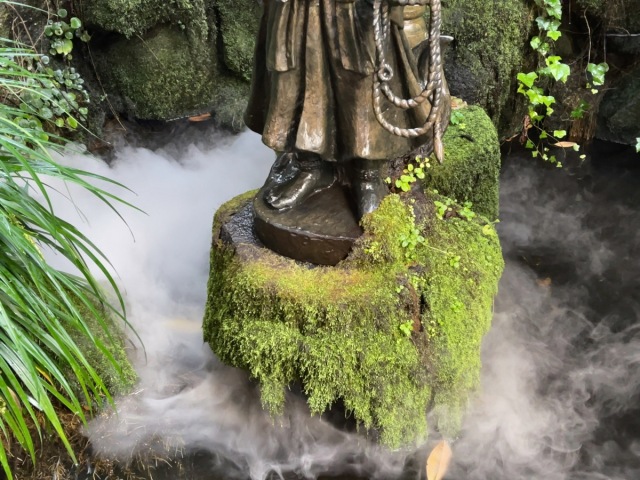
After making our way through hell and paradise, we were able to speak to the chief priest, Yoshihito Kawaguchi.
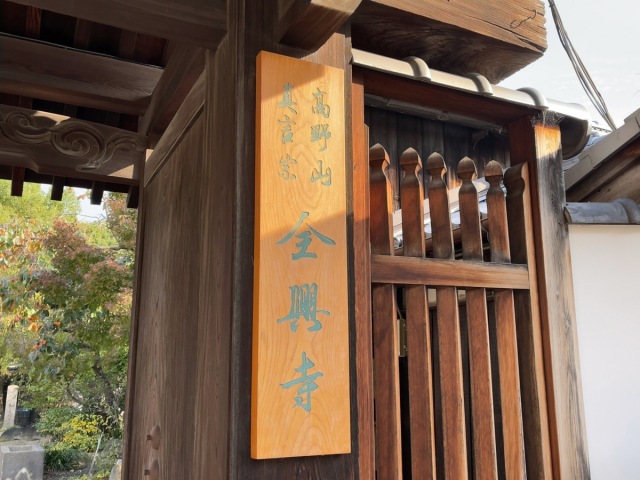
We asked him why the temple created this theme-park-esque experience, and he replied:
“All the facilities in the precincts are for ‘experiencing’ Buddhist teachings. It didn’t start as entertainment.”
“For example, ‘hell’ is a modern renewal of the temple hall dedicated to Yama, which had existed here since the Edo period. Originally, Buddhism spread through different forms of expression such as drawings and written word, depending on the country and era, so using audio visual equipment like the video you saw isn’t really that strange. I think it’s quite a natural progression in the course of the times.”
He went on to add:
“In modern times, many people look outside of themselves for stress relief, but in Buddhism peace comes from one’s heart. In urban areas, the quietest place is often below ground, which is why ‘The Home of Buddha’ for meditation is located below ground.”
“Many people think they can only make a connection with Buddha after death, but in reality it’s important to make the connection while they are alive. The ‘red thread love knot’ photo spot helps to make that connection visible, and you can also share the photo on Instagram.”
“Things stay with people the most when they experience them. It’s not just about sightseeing. We’d like children to experience Buddhist teachings while having fun as if they were playing games, not as a painful place where they’re forced to do zazen meditation or listen to preaching.”
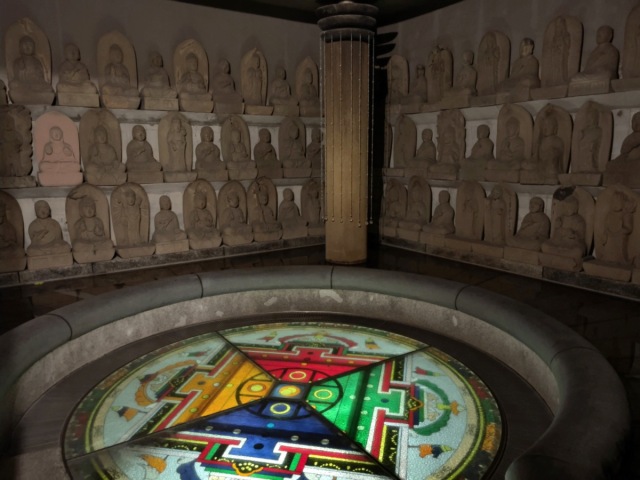
The wise words from the chief priest of the temple stayed with us as we left the grounds.
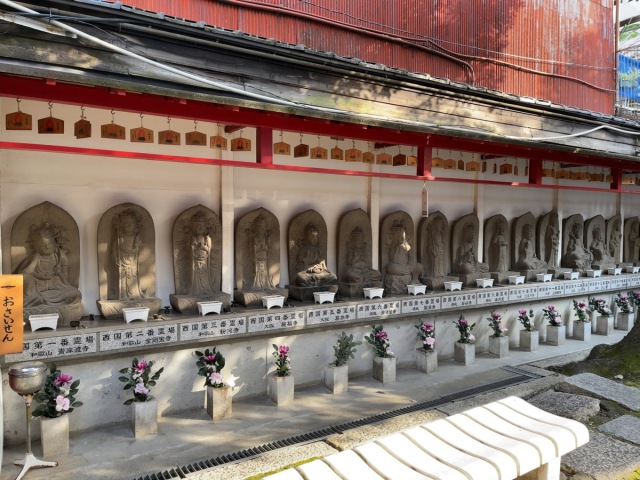
The temple has a west gate and a north gate, and after entering through the west gate we left via the north gate, which leads you directly into the Hirano Honmachi shopping arcade. This was a reminder of the temple’s long history in the area, as this shopping street grew from the stall vendors who used to gather around the temple centuries ago.
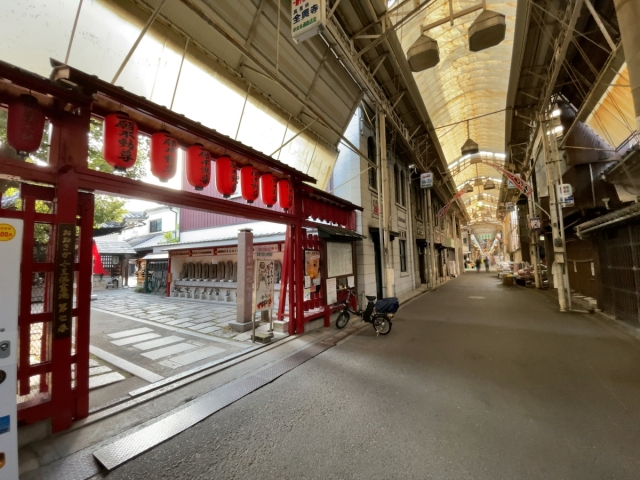
Our visit to heaven and hell just scratched the surface of what Senkoji has to offer, as there are unique souvenirs, classes for copying sutras, and even smartphone games for visitors to enjoy. It’s definitely a unique place to visit, and an experience that will stay with you long after you return home, much like a visit to this temple in Niigata Prefecture, which has sensual ikemen art on its walls.
Temple information
Senkoji / 全興寺
Address: Osaka-fu, Osaka-shi, Hirano-ku, Hirano Honmachi 4-12-21
大阪市平野区平野本町4-12-21
Hours: 8:30 a.m.-5:30 p.m. (Reception closes at 5:00 p.m.)
Website
Photos ©SoraNews24
● Want to hear about SoraNews24’s latest articles as soon as they’re published? Follow us on Facebook and Twitter!

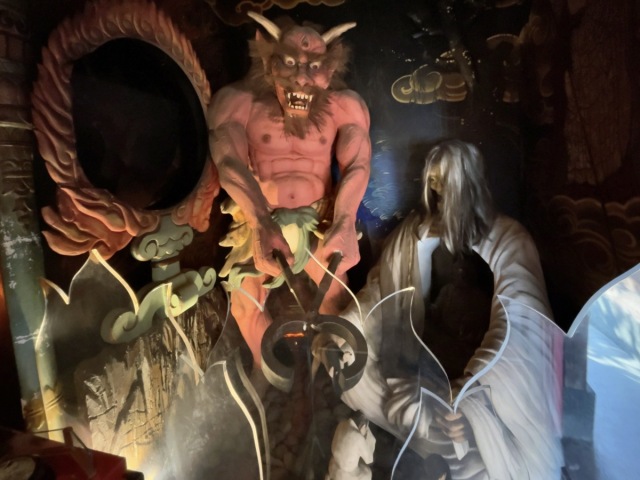
No hay comentarios:
Publicar un comentario